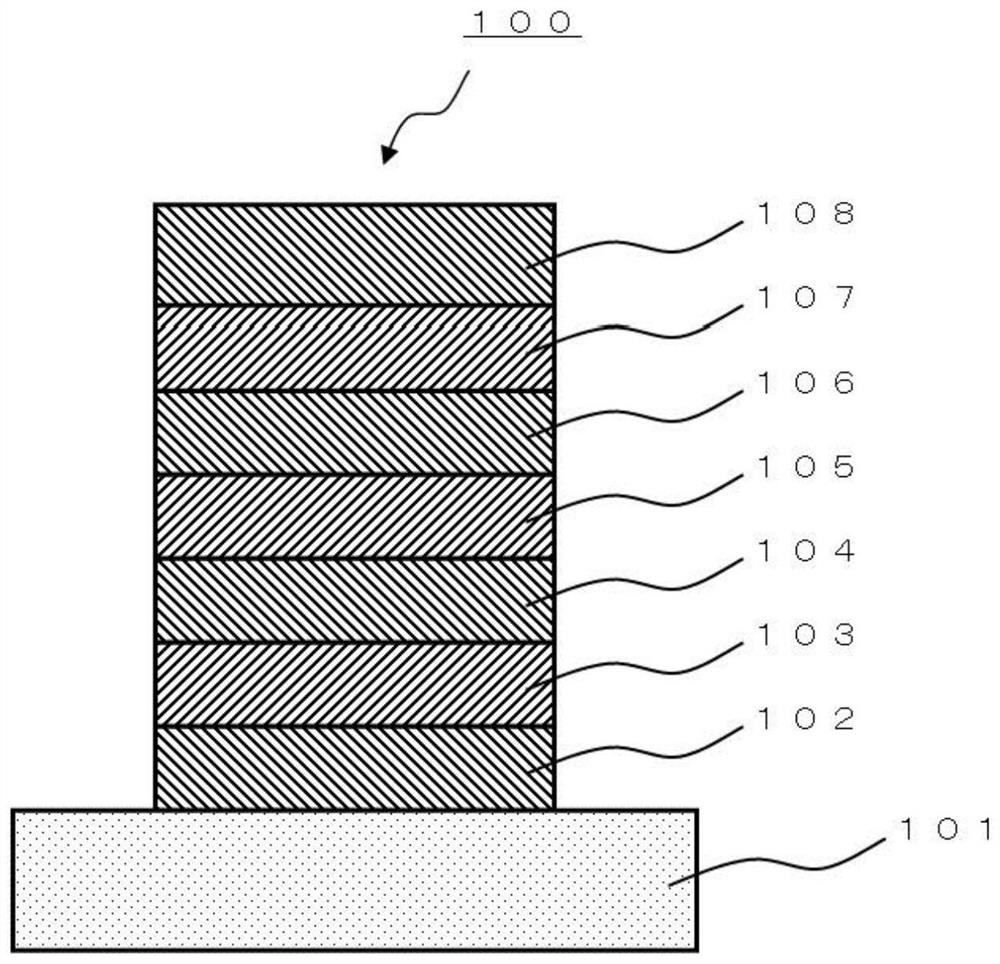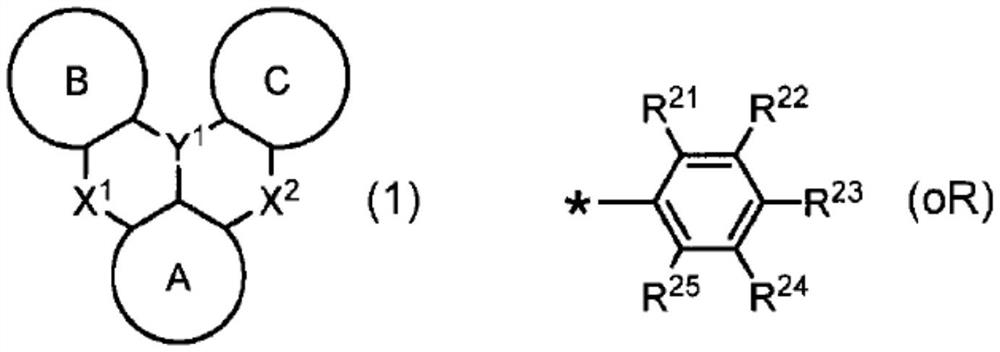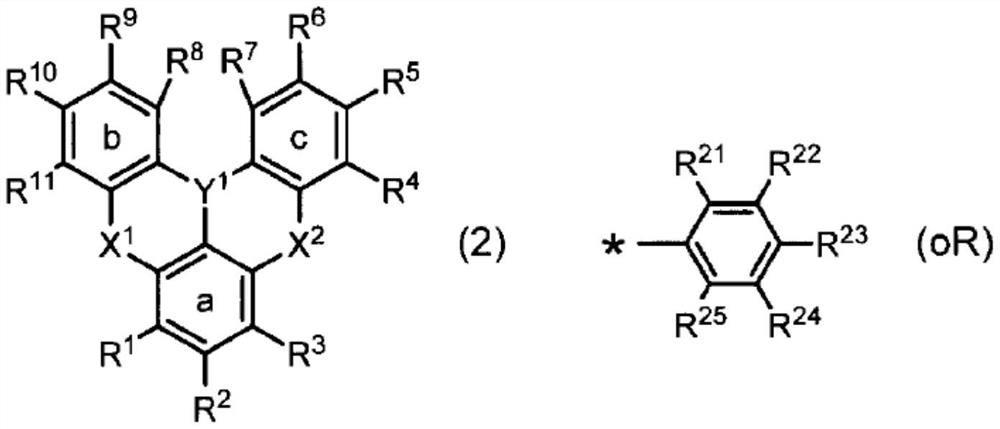Electron transport material or electron injection material containing alkyl-substituted polycyclic aromatic compound
An electron injection material and electron transport material technology, which is applied in the fields of display devices, lighting devices, and organic electroluminescence elements, and can solve the problems of undocumented NO linking compound manufacturing method, different electronic states, unknown characteristics, etc.
- Summary
- Abstract
- Description
- Claims
- Application Information
AI Technical Summary
Problems solved by technology
Method used
Image
Examples
Embodiment
[0570] Hereinafter, although an Example demonstrates this invention more concretely, this invention is not limited to these Examples. First, a synthesis example of a polycyclic aromatic compound will be described below.
Synthetic example (1
[0571] Synthesis Example (1): Synthesis of Compound (1-101)
[0572] [chem 93]
[0573]
[0574] Under nitrogen atmosphere, put 1,3-dibromo-5-fluorobenzene (50.0g), carbazole (36.2g), potassium carbonate (54.0g) and N-methylpyrrolidone (NMP, 250mL) into the flask , stirred at 170°C for 6 hours. After the reaction, the reaction liquid was cooled, and after adding water, the precipitate was filtered. After the precipitate was washed with water and methanol and dried, it was purified with a silica gel column (eluent: toluene / heptane = 2 / 8 (volume ratio)), and the crude product was dissolved in toluene and purified with heptane It was reprecipitated with alkane to obtain compound (A) (55.3 g).
[0575] [chem 94]
[0576]
[0577] Under a nitrogen atmosphere, compound (A) (25.0g), 3-(2-methylphenyl)phenol (25.2g), copper iodide (0.60g), tris(acetylacetonate)iron (2.20g), Potassium carbonate (34.0 g) and N-methylpyrrolidone (NMP, 100 mL) were put into the flask, and it st...
Synthetic example (2
[0585] Synthesis Example (2): Synthesis of Compound (1-201)
[0586] [chem 97]
[0587]
[0588] Under nitrogen atmosphere, 1,3-dibromo-5-fluorobenzene (80.0 g), 4-(9H-carbazol-9-yl)phenylboronic acid (130.9 g), dichlorobis( Di-tert-butyl(4-dimethylaminophenyl)phosphino)palladium (Pd-132, 1.47g), potassium phosphate (176g), toluene (600mL), isopropanol (IPA, 150mL) and water ( 70 mL) into the flask and stirred at reflux temperature for 2 hours. After cooling the reaction liquid, water was added and stirred, toluene was added and liquid separation extraction was performed, and the water layer was removed, and the organic layer was further washed with water. Further, the crude product obtained by concentrating the organic layer under reduced pressure was washed with a mixed solution of heptane / ethyl acetate=4 / 1 (volume ratio), thereby obtaining a compound (C) (166 g).
[0589] [chem 98]
[0590]
[0591] Under nitrogen atmosphere, compound (C) (25.0g), 3-(2-methylphenyl)...
PUM
| Property | Measurement | Unit |
|---|---|---|
| electron work function | aaaaa | aaaaa |
Abstract
Description
Claims
Application Information
 Login to View More
Login to View More - Generate Ideas
- Intellectual Property
- Life Sciences
- Materials
- Tech Scout
- Unparalleled Data Quality
- Higher Quality Content
- 60% Fewer Hallucinations
Browse by: Latest US Patents, China's latest patents, Technical Efficacy Thesaurus, Application Domain, Technology Topic, Popular Technical Reports.
© 2025 PatSnap. All rights reserved.Legal|Privacy policy|Modern Slavery Act Transparency Statement|Sitemap|About US| Contact US: help@patsnap.com



